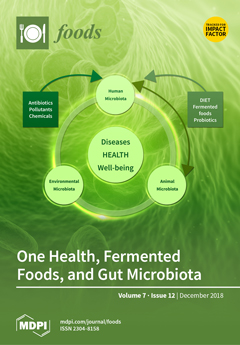This research describes the characterization of bioactive compounds, mineral content, and antioxidant capacity in bean varieties grown in semi-arid conditions in Zacatecas, Mexico. This will provide better progress perspectives for agriculture nationwide and will ensure that bean crops are in the condition to
[...] Read more.
This research describes the characterization of bioactive compounds, mineral content, and antioxidant capacity in bean varieties grown in semi-arid conditions in Zacatecas, Mexico. This will provide better progress perspectives for agriculture nationwide and will ensure that bean crops are in the condition to satisfy the population’s nutritional needs by placing it not only as one of the foodstuffs comprising Mexico’s basic diet but also as one of the legumes having greater biofortification potential in Mexico. Eleven bean varieties were collected (flor de mayo, bayo, frijola, patola, navy beans, flor de junio, reata beans, Japanese beans, black beans, canary beans, and pinto Saltillo). The evaluation done included the physical and physico-chemical characteristics, as well as the mineral content, bioactive compounds and antioxidant capacity of these bean varieties. Data gathered were subject to a variance and mean separation analysis. The most remarkable individual results were as follows: Canary beans had the highest iron content (105.29 mg/kg), while bayo beans had the highest zinc concentration (48.18 mg/kg) and reata beans had the highest level of protein (26.88%). The varieties showing the most remarkable results with regard to zinc, iron and protein content and antioxidant capacity were as follows: Flor de junio, flor de mayo, reata beans, navy beans and pinto Saltillo; however, the most remarkable variety in comprehensive terms was flor de junio, which showed a reducing power of 0.20%, an antioxidant capacity of 80.62% inhibition, a protein content of 0.17%, in addition to Ca (0.24%), Fe (90.97 mg/kg), Zn (27.23 mg/kg), fiber (3.22%), energy (353.50 kcal), phenols (94.82 mg gallic acid (GA)/g extract) and flavonoids (1.30 mg mg Cat/g
−1 dw). Finally, we came to the conclusion that beans grown in Zacatecas, Mexico, offer a huge benefit to consumers as a result of the mineral, protein, fiber, bioactive compounds, and antioxidant capacity contributions such beans provide. Thus, these beans can be used in a biofortification program using micronutrients to improve their nutritional quality.
Full article






